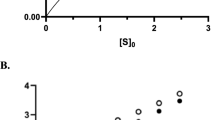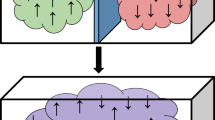Abstract
THERE is convincing evidence that some chemical changes take place by a mechanism involving reaction chains of considerable length, and equally convincing evidence that in other reactions no such long chains occur. Nearly every chemical reaction, however, starts by the activation of certain molecules, that is, by considerable highly localised thermodynamic fluctuations, and in principle it is possible that some of these fluctuations are intense enough for their influence to persist through several cycles of chemical change, giving rise to the effect of very short chains, although the normal characteristics of a chain reaction would not be exhibited. This point of view has been emphasised by Semenov at the end of his recent book. Either the fluctuation is simply an accumulation of energy, or, in accordance with a widely held modern view, it leads to the escape of free radicles. These are thermodynamically unstable, and must at once, or after a greater or smaller interval of time, disappear from the system.
This is a preview of subscription content, access via your institution
Access options
Subscribe to this journal
Receive 51 print issues and online access
$199.00 per year
only $3.90 per issue
Buy this article
- Purchase on Springer Link
- Instant access to full article PDF
Prices may be subject to local taxes which are calculated during checkout
Similar content being viewed by others
Author information
Authors and Affiliations
Rights and permissions
About this article
Cite this article
STAVELEY, L., HINSHELWOOD, C. Inhibition of Homogeneous Reactions by Small Quantities of Nitric Oxide. Nature 137, 29–30 (1936). https://doi.org/10.1038/137029b0
Issue Date:
DOI: https://doi.org/10.1038/137029b0
Comments
By submitting a comment you agree to abide by our Terms and Community Guidelines. If you find something abusive or that does not comply with our terms or guidelines please flag it as inappropriate.



